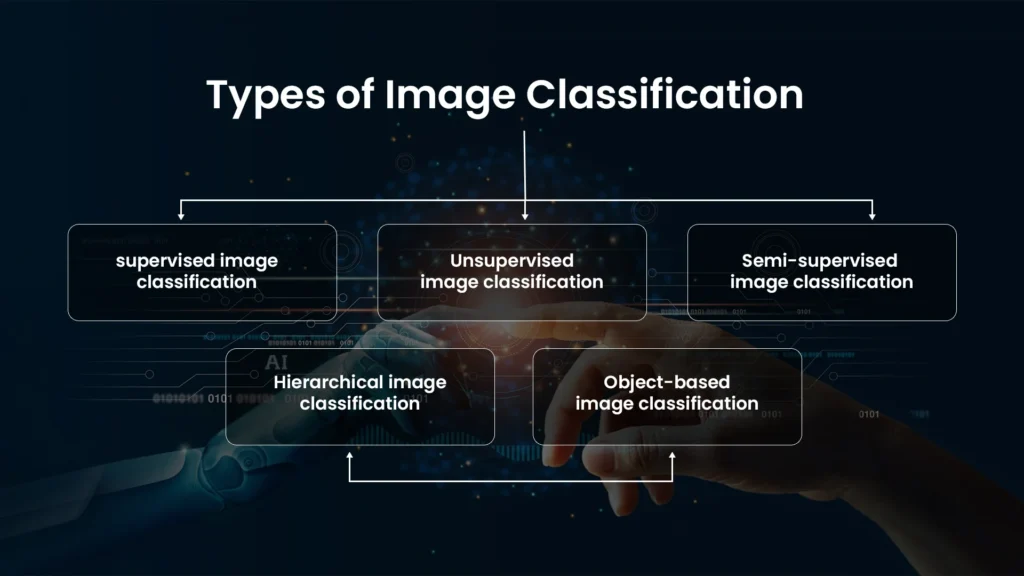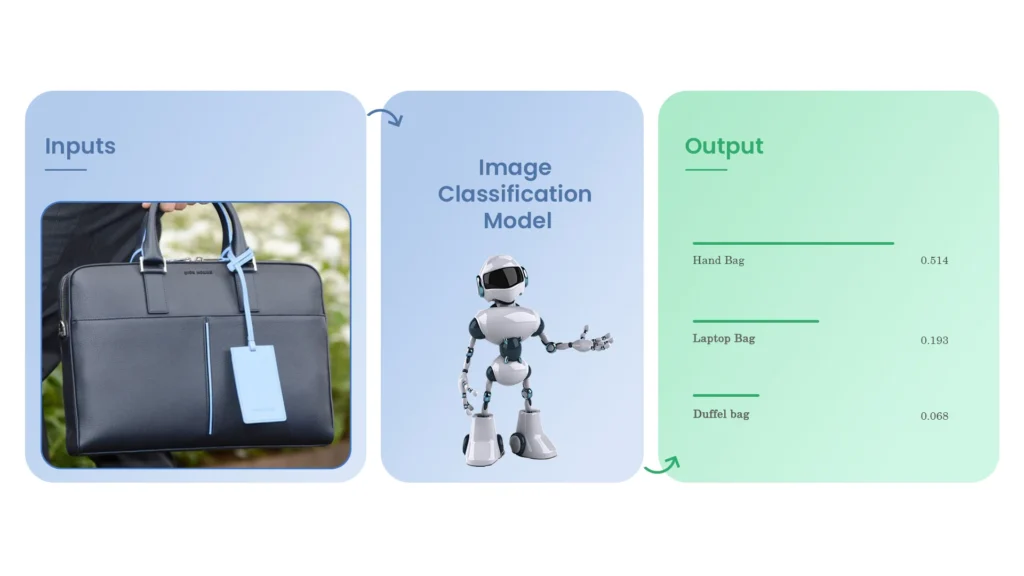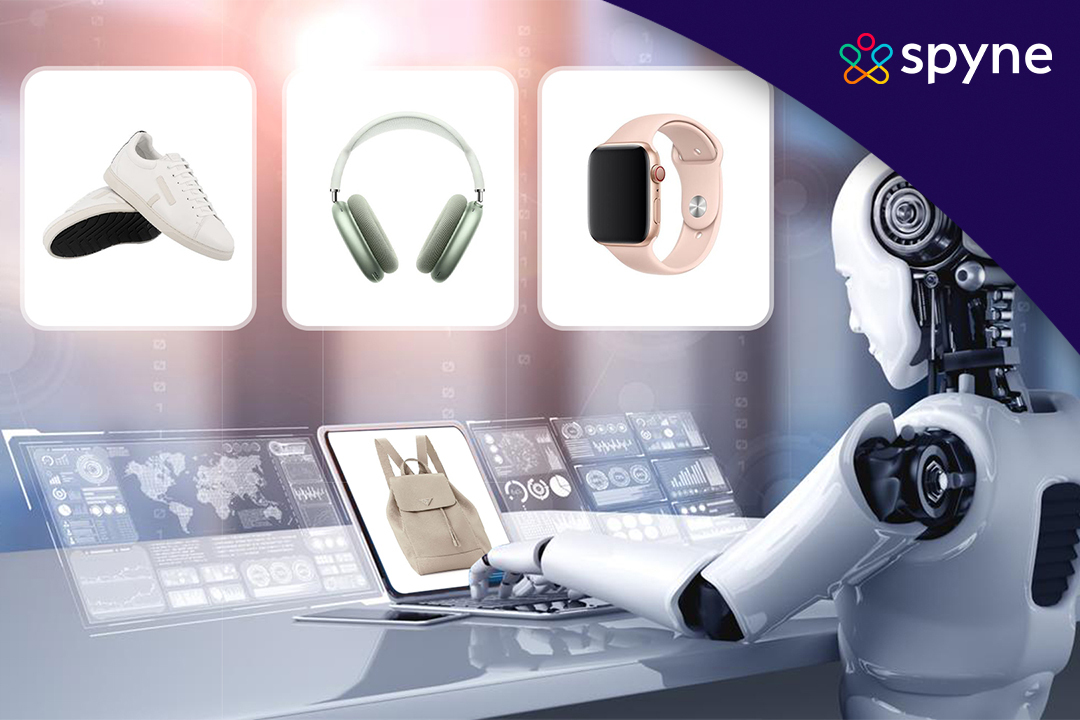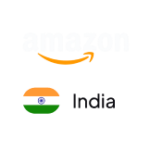Classifier is an algorithm that sets the input data to a specific category. Computer algorithms categorize images based on their content, making classification crucial. In this process, a model is trained with labeled images to learn patterns and associations between visual elements and labels. Once trained, the model can accurately assign new, unlabeled images to predefined categories. This technology has widespread applications in object recognition, face detection, medical image analysis, and more. This is vital in various industries, allowing businesses to enhance operations, improve decision-making, and gain a competitive edge.
What is Image Classification?
It is the process of categorizing images based on their content using a computer algorithm. It involves training a model with labeled pictures and extracting meaningful features through techniques like convolutional neural networks. During training, the model learns to recognize patterns and associations between visual elements and labels. The trained model applies knowledge in the classification phase to assign new, unlabeled images to predefined categories or classes.
This technology has numerous real-world applications, including object recognition, face detection, medical image analysis, autonomous driving, content-based image retrieval, and more. It plays a vital role in various fields requiring visual understanding and interpretation.
Types of Image Classification
Image category classification is a type of photo classification that involves assigning an image to one of a predefined set of categories. The number of classes can vary depending on the specific application, but it is typically at least two and can be as high as hundreds or even thousands. For example, supervised picture classification ai is best if you have many labeled training data. However, a semi-supervised or unsupervised image category classification tool may be more appropriate if only a limited amount of labeled data is available.

1) Supervised image classifier: A classifier learns to associate the features of an image with its class label by requiring a set of labeled training images, where each image is assigned to a specific class.
2) Unsupervised image classifier: A classifier learns to identify patterns in the data and group images together based on their similarities without requiring any labeled training images.
3) Semi-supervised image classifier: A classifier combines labeled and unlabeled training images to improve accuracy over unsupervised classification.
4) Hierarchical image classifier: A classifier classifies images into a hierarchy of classes, which can be used for tasks such as semantic segmentation.
5) Object-based image classifier: A classifier classifies images based on the objects they contain, which can be used for tasks such as land cover classification.
Why is Image Classification Important?
Technology, such as the one developed by Spyne AI, is proving to be a versatile tool with various applications in different fields. One innovative application involves the creation of a virtual showroom that offers users a 360-degree view of cars and enables them to customize the vehicles’ appearances. This is just one example of Classifier’s many possibilities for the future.
As AI technology advances, image classification is expected to become increasingly powerful and accurate. This progress will unlock new opportunities for businesses and organizations to enhance operations and gain a competitive edge. With improved accuracy, the image classification tool will recognize and categorize images more precisely, enabling more efficient and effective decision-making processes.
The future of image classification appears promising and full of opportunities. Advancements in AI technology will continue to improve the accuracy and capabilities of image classification ai systems, allowing businesses and organizations to leverage this technology in various domains. With its potential to enhance operations, improve decision-making, and provide a competitive advantage, image classification is poised to revolutionize numerous industries and contribute to their growth and success.
How does Image Classification Work?
Image classification is a type of machine learning that allows computers to identify and categorize objects in images. It is a supervised learning problem, that requires a training dataset of ideas that have already been labeled with the correct thing.

1. Data preparation: The first step is to prepare the image data for training. This involves resizing the images, converting them to a format the machine learning algorithm can understand, and labeling them with the correct object class.
2. Model training: The machine learning algorithm is actively trained by providing it with labeled images, allowing it to learn the distinguishing features of different object classes.
3. Model evaluation: After training, it becomes crucial to evaluate the model’s performance using a separate dataset. This step ensures the model is reliable and can be confidently deployed for further use.
4. Model deployment: Once the model is calibrated and proven to perform satisfactorily, it can be deployed for practical applications. This allows the model to be utilized in handling claims related to damages, for instance.
Convolutional neural networks (CNNs) are widely recognized and popular choices among the various machine-learning algorithms actively utilized for classifiers. CNNs are explicitly designed for image processing, actively extracting relevant features from images to achieve accurate classification.
How Does Spyne’s Image Classification Work?
Spyne, a cloud-based image classification API, actively employs deep learning techniques to identify objects within images. It effectively performs image classification tasks across diverse domains, including e-commerce, food, and fashion.
Spyne’s image classification process works as follows:
1. The user uploads an image to the Spyne API.
2. The API sends the image to a deep-learning model trained on a large dataset of images.
3. The model extracts features from the image relevant to the object class the image is trying to be classified as.
4. The model then predicts the object class of the image.
5. The API returns the predicted object class to the user.
What are the Key Concepts of Image Classification?
It is the task of assigning a label to an image based on its visual content. This task is challenging, as images can contain various objects, and the same object can appear differently depending on the lighting, viewpoint, and other factors.
The two main types of image classification are supervised and unsupervised.
- Supervised Classification is the most common type of image classification. In supervised image classification, a model is trained on a set of images that have already been labeled. The model learns to associate the visual features of the images with the labels.
- Unsupervised classification is a more challenging type of image classification. In unsupervised image classification, the model is not given any labels. The model must learn to find patterns in the images and group them together based on those patterns.
Key Concepts of Image Classification
Several key concepts are essential to understand in image classification. These include:
- Features: Features are the individual pieces of information that are extracted from an image. Features can be simple, such as the color of an object, or they can be more complex, such as the shape or texture of an object.
- Feature extraction: Feature extraction is extracting features from an image, you can use different feature extraction techniques.
- Classification: Classification assigns a label to an image based on its features.
- Evaluation: Evaluation is the process of measuring the accuracy of an image classification model.
Spyne’s Category Classifier
Furthermore, Spyne’s Category Classifier actively serves as a tool for conducting image classification. It operates as a supervised image classification model, trained extensively on a vast dataset of images. With its capabilities, the Category Classifier actively classifies images across diverse industries, including automobiles and ecommerce.
The accuracy and effectiveness of a Spyne category classifier depend on the quality and diversity of the training dataset, as well as the chosen machine learning algorithm and feature representation. It can be a valuable tool in automobiles, ecommerce, and food industries, where efficient categorization of spyne can streamline production processes or aid in inventory management.
Image Classification Algorithms Fall Into Two Categories
Image classification ai is a powerful tool that can extract information from images. The algorithm analyzes and categorizes images based on their visual features. It identifies patterns and extracts meaningful information to assign labels to the images. The algorithm utilizes deep learning techniques and neural networks to train on large datasets, improving its accuracy over time. During the classification process, it actively examines the images pixel by pixel, making predictions and matching them to predefined categories. This algorithm finds widespread usage across various applications, actively contributing to object recognition, facial recognition, and content filtering. It actively delivers valuable insights and automation in image analysis tasks.

In the automobiles and ecommerce industries, classifier actively serves a variety of purposes, including:
1) Object detection: It actively identifies objects, such as cars, parts, or products, within images. This information actively aids in quality control, inventory management, and fraud detection.
2) Scene understanding: It actively comprehends the context of an image, such as the driving environment or the layout of an ecommerce store. This actively assists in navigation, marketing, and product recommendations.
3) Image search: It actively facilitates the search for images based on their content, allowing for the discovery of specific products, cars, or scenes.
Moreover, with this technology, you can actively employ various algorithms. The most popular approaches include machine learning (ML) and deep learning (DL).
Machine Learning
During the training process, machine learning algorithms actively train on a labeled dataset of images, actively learning to identify the features linked to each image category. When presented with a new input, the algorithm actively predicts the image category based on the learned features.
Some of the most common machine learning algorithms of classification include:
- Support vector machines (SVMs)
- Random forests
- K-nearest neighbors (KNN)
Deep Learning
Deep learning algorithms belong to machine learning, utilizing artificial neural networks to extract knowledge from data. Drawing inspiration from the human brain, these networks can comprehend intricate patterns within datasets.
One of the most popular deep learning architectures is the convolutional neural network (CNN). CNNs excel in image classification because they can actively learn local patterns within images, enabling them to achieve state-of-the-art results across various tasks.
Image Classification vs. Object Detection
Image classification and object detection are two closely related tasks in computer vision. However,
The difference between image classification and object detection is as follows:
- Image classification actively assigns a label to an image based on its visual content, such as labeling images as “interior” or “exterior”.
- Object detection actively detects and localizes objects in an image, including drawing bounding boxes around specific areas, such as the interior and exterior.
The model receives the image in image classification and actively learns to associate visual features with the corresponding label. On the other hand, object detection involves providing the model with both the image and the bounding box information of the objects, aiding in better localization of the objects within the image.
Algorithms and Models: Supervised and Unsupervised Classification
There are two main types of classification algorithms: supervised and unsupervised.
1) Supervised classification AI actively trains a model on a labeled set of images, associating visual features with corresponding labels.
2) Unsupervised classification poses a more challenging task, where the model must learn patterns in images and group them without any given labels.
Several supervised image classification algorithms find common usage, such as:
- Support vector machines (SVMs)
- Random forests
- K-nearest neighbors (KNN)
- Neural networks
For unsupervised image classification, popular algorithms include:
- K-means clustering
- Hierarchical clustering
- Gaussian mixture models.
Deep Neural Networks for Image Classification
Deep neural networks (DNNs) are machine learning model that has succeeded in picture classification. DNNs can learn complex patterns in images, which allows them to achieve high accuracy.
One of the most popular DNN architectures for classifiers is the convolutional neural network (CNN). CNNs excel in photo classification as they actively learn local patterns within images. They actively employ these algorithms to achieve state-of-the-art outcomes in various classification tasks.
Applications of Image Classification
Image classification actively empowers extracting information from images as a powerful tool.
In the automobiles solutions and ecommerce industries, businesses actively utilize this software for picture classification, serving various purposes, such as:
1) Object detection: This can identify objects in images, such as cars, parts, or products. Companies can utilize this information for various purposes, including quality control, inventory management, and fraud detection.
2) Scene understanding: Understanding the context of an image, such as the driving environment or the layout of an eCommerce store, allows for versatile applications, including navigation, marketing, and product recommendations.
3) Image search: This AI actively enables searching for images based on their content, facilitating the discovery of specific products, cars, or scenes.
Now, let’s explore specific instances of how the automotive and ecommerce industries actively employ this AI.
Automobiles:
1. Quality control: Image classification can identify defects in car parts or vehicles. This can help to improve the quality of cars and reduce the number of recalls.
2. Inventory management: Image classification can be used to count and track the inventory of car parts and vehicles. This helps ensure that the right details are available and the inventory is accurate.
3. Fraud detection: Image classification can detect fraudulent images, such as those used in insurance claims or online scams. This can help in preventing scams against individuals and businesses.
Ecommerce:
1. Product Search: Image classification can help customers find products by image. This can be especially helpful for products that are difficult to describe in words, such as clothing or furniture.
2. Product recommendations: Image classification can suggest products to clients based on previous purchases or browsing habits.
3. Fraud detection: Image classification can detect fraudulent images, such as those used in product listings or reviews. This can help in preventing scams against individuals and businesses.
Conclusion
This blog has discussed the basics of Category Classifiers, including what it is, why it is essential, how it works, and the key concepts involved. Additionally, we explored various types of photo classification, along with the algorithms and models available. It also discussed the diverse applications of this technology.
Spyne offers the Category Classifier as a powerful tool for actively classifying images in various industries, such as automobile and ecommerce industries. A category classifier is an AI model that uses supervised software to classify various images, including cars, parts, products, and scenes.
In the automotive and ecommerce industries, photo classification AI is pivotal in extracting valuable information from images. It serves diverse purposes, such as object detection, scene understanding, and image search. Therefore, for businesses aiming to extract information from images in the automobile or ecommerce sectors, Spyne’s Category Classifier emerges as an exceptional choice.





























